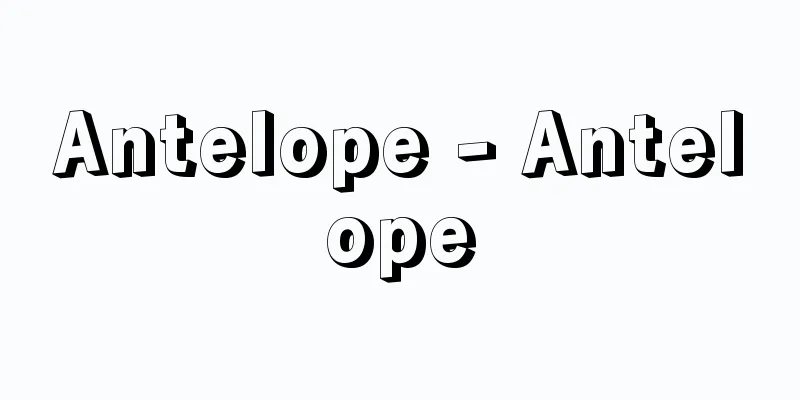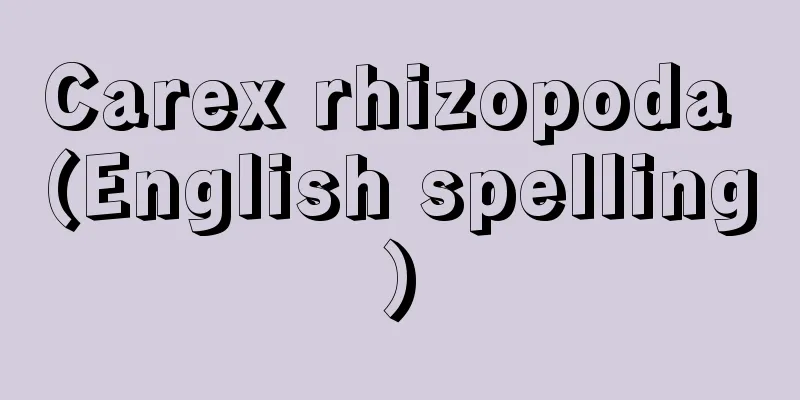High Treason Incident

|
This was a crackdown on socialists and anarchists who were arrested and executed for plotting to assassinate Emperor Meiji. It is also known as the Kotoku Incident. The socialist movement, which had gained momentum in opposition to the Russo-Japanese War, was oppressed by the government, who banned publication of the movement's journals, suppressed meetings, and forbade associations, and sent key figures such as Sakai Toshihiko and Osugi Sakae to prison in the Red Flag Incident of June 1908 (Meiji 41). After this, the movement was barely able to develop in any real way, and in May 1909, "Jiyu Shiso," founded by Kotoku Shusui and Kanno Sugara, was forced to close due to repeated bans, making any legal movement impossible. In the grip of persecution, they quickly tried to find a way to realize a revolution through direct action and general strikes, and Kanno, who was particularly driven by a desire for revenge against the oppression, along with Miyashita Takichi, Niimura Tadao, and Furukawa Rikaku, came up with a plan to assassinate the Emperor with explosive bombs, hoping to wake the Japanese people from their delusional dreams by shedding the Emperor's blood. Miyashita manufactured the explosive bombs at a lumber mill in Akashina, Nagano Prefecture, and attempted an explosion experiment in November 1909. In January 1910, they discussed the specific procedures for throwing them at the Heiminsha in Sendagaya, Tokyo, but Kotoku was indifferent to the plan and wanted to concentrate on writing. The authorities, who had infiltrated spies, became aware of this plan, and began by arresting Miyashita in Nagano Prefecture on May 25, 1910, followed by Kotoku in Yugawara, Kanagawa Prefecture on June 1. Using the Nagano Prefecture Akashina Bomb Incident as a clue, the government aimed to eradicate the socialist movement in one fell swoop, and based on the revolutionary talks that Kotoku had given during his travels around the country, they indicted 26 people, including the Kishu faction led by Oishi Seinosuke, the Kumamoto faction led by Matsuo Ichita, the Osaka faction led by Takeda Kyuhei, as well as Morichika Unpei, Okumiya Kenshi, and Uchiyama Gudou, and also arrested and interrogated several hundred socialists from all over the country based on address books that had been seized. Nationwide investigations, interrogations, and trials were carried out under the direction of Home Minister Hirata Tosuke, Police Security Bureau Director Arimatsu Hideyoshi, Director of the Criminal Affairs Bureau of the Ministry of Justice and Supreme Court Prosecutor Hiranuma Kiichiro, and Prosecutor General Matsumuro Itasu, under the second Katsura Taro cabinet, and under strong pressure from elder statesman Yamagata Aritomo and other government officials and Privy Councilors, the entire incident was handled politicized from start to finish. Charged with high treason under Article 73 of the Penal Code, the trial was held at the Daishin'in, which immediately concluded the first trial. After a preliminary hearing opinion was submitted to the Daishin'in on November 1, the decision was made to hold a public trial on the 9th. Under strict security, the trial, which was closed to the public, began on December 10th, before presiding judge Tsuru Joichiro. The defense lawyers were Uzawa Soumei, Hanai Takuzo, Imamura Rikisaburo, Hiraide Shu, and others. The trial continued almost every day, and on December 25th the prosecutor's closing argument was made, with Hiranuma stating in his general statement that "the defendants are anarchists who plotted high treason to carry out their beliefs, and their motive was their beliefs." Finally, Matsumuro called for the death penalty for all of them, and from the 27th the defense lawyers, led by Hanai, made their arguments, and the trial concluded without the need to examine a single witness. The verdict was handed down on January 18th, 1911, and all were found guilty, with 24 people sentenced to death, except for two who were given fixed-term sentences. On the following day, the 19th, the Emperor pardoned and commuted the sentences of 12 of the defendants, including Sakamoto Seima and Takagi Kenmei, to life imprisonment, while on the 24th, in an unusually swift move, the death sentences of 11 people, including Kotoku, Oishi, Morichika, and Miyashita, were executed, and on the 25th, the death sentence of Kanno was carried out. The 14 men who were given life or fixed term sentences were sent to prisons in Akita, Isahaya (Nagasaki Prefecture), and Chiba, and five of them died in prison by hanging or illness. Kotoku wrote his posthumous work, "The Elimination of Christ," while in prison, and also criticized the trial in a detailed "petition." Kanno also wrote "A Way to Death," as well as other memoirs and suicide notes. As Kanno wrote in his notes, "Rather than calling this incident a conspiracy by anarchists, it would be more appropriate to call it a conspiracy hatched by prosecutors," this incident was framed as a naive plot to assassinate the emperor that had been discussed by five people - Kotoku, Kanno, Miyashita, Niimura, and Furukawa - and the execution plan was worked out by the remaining four, excluding Kotoku, and involved many socialists who had no direct connection to the incident. It was an unprecedented crackdown orchestrated by the Katsura Cabinet with the aim of eradicating the socialist movement. The storm of crackdown that swept across the country drove the socialist movement into a corner, so much so that it was described as a "winter age." Many people converted, having lost their jobs, been expelled from school, and had their lives destroyed, but the few socialists who survived endured the cold winds of the "winter age" by secluding themselves in the Baibunsha publishing company led by Sakai Toshihiko and others, taking refuge in the literary scene like Osugi and Arahata Kanson and publishing "Modern Thought," or going into exile like Katayama Sen and Ishikawa Sanshiro. This incident was a clever campaign by the government to instill the horrors of socialism in the general public, and also had a major impact on literary figures. Tokutomi Roka lectured at First Higher School on "Rebellion," calling Kotoku and others martyrs, Ishikawa Takuboku keenly saw through the essence of the incident and continued to study socialism, and Mori Ogai and Nagai Kafu wrote works satirizing the incident. Socialists in Europe and the United States also launched protest movements, sending numerous telegrams of protest to the Japanese government. In 1961, the only surviving murderer, Kiyoma Sakamoto, and Unpei Morichika's younger sister, Eiko, filed a request for a retrial at the Tokyo High Court, but it was rejected in 1965. [Fujio Ogino] "Secret Records of the High Treason Incident, volumes 1 and 2, edited by Shioda Shobei and Watanabe Junzo (1959, Shunjusha) " ▽ "Records of the High Treason Incident, edited by the High Treason Incident Records Publishing Committee (1972, Sekai Bunko)" ▽ "Revolutionary Legends, by Kanzaki Kiyoshi, four volumes (1968-69, Haga Shoten)" ▽ "Revised and expanded version of the High Treason Incident, by Itoya Toshi (1970, Sanichi Shobo)" ▽ "The Thoughts of Kotoku Shusui and the High Treason Incident, by Ohara Satoshi (1977, Aoki Shoten)" [References] | |Source: Shogakukan Encyclopedia Nipponica About Encyclopedia Nipponica Information | Legend |
|
明治天皇の暗殺を計画したという理由で多数の社会主義者、無政府主義者が検挙、処刑された弾圧事件。幸徳(こうとく)事件ともいう。 日露戦争反対を機に高揚した社会主義運動に対し、政府は機関誌紙の発禁や集会の禁圧、結社禁止などの抑圧を加え、1908年(明治41)6月の赤旗事件で堺利彦(さかいとしひこ)、大杉栄(さかえ)らの中心的人物を獄に送った。これ以後、実質的な運動はほとんど展開できない状勢になり、09年5月に幸徳秋水、管野(かんの)すがらの創刊した『自由思想』も発禁の連続で廃刊を余儀なくされ、合法的な運動は不可能になる。迫害に窮迫した彼らは急速に、直接行動・ゼネストによる革命の実現に突破口をみいだそうとし、とくに弾圧への復讐(ふくしゅう)の念に燃えた管野は、宮下太吉(みやしたたきち)、新村忠雄(にいむらただお)、古河力作(こがりきさく)とともに、天皇の血を流すことにより日本国民の迷夢を覚まそうと爆裂弾による暗殺計画を練った。宮下は長野県明科(あかしな)の製材所で爆裂弾を製造し、09年11月爆発の実験も試み、10年1月には東京・千駄ヶ谷(せんだがや)の平民社で投擲(とうてき)の具体的手順を相談するが、幸徳は計画に冷淡で著述に専念しようとした。 取締当局はスパイを潜入させたりなどしてこの計画を感知し、1910年5月25日の長野県における宮下検挙を手始めに、6月1日には神奈川県湯河原(ゆがわら)で幸徳を逮捕。政府はこの長野県明科爆裂弾事件を手掛りに一挙に社会主義運動の撲滅をねらって、幸徳が各地を旅行した際の革命放談などをもとに、大石誠之助(おおいしせいのすけ)らの紀州派、松尾卯一太(まつおういちた)らの熊本派、武田九平(たけだきゅうへい)らの大阪派、さらに森近運平(もりちかうんぺい)、奥宮健之(おくのみやけんし)、内山愚童(うちやまぐどう)ら26名を起訴するほか、押収した住所録などから全国の社会主義者数百名を検挙して取り調べた。第二次桂(かつら)太郎内閣下の平田東助(とうすけ)内相、有松英義(ひでよし)警保局長、平沼騏一郎(きいちろう)司法省行刑局長兼大審院検事、松室致(まつむろいたす)検事総長らの指揮により全国的な捜査、取調べと裁判が進められ、元老山県有朋(やまがたありとも)をはじめ政府部内や枢密顧問官らの強い圧力を受けて、事件全体が終始政治的に取り扱われた。 刑法第73条の大逆罪に問われたため、裁判は大審院における一審即終審で行われた。11月1日予審意見書が大審院に提出されたのち、同9日公判に付すことを決定、厳重な警戒下、12月10日から裁判長鶴丈一郎(つるじょういちろう)のもとで公開禁止の公判が開始された。弁護人は鵜沢聡明(うざわそうめい)、花井卓蔵(たくぞう)、今村力三郎(りきさぶろう)、平出修(ひらいでしゅう)らであった。公判はほとんど連日開かれ、12月25日検事の論告があり、平沼は総論で「被告人ハ無政府主義者ニシテ、其信念ヲ遂行スルノ為大逆罪ヲ謀ル、動機ハ信念ナリ」と述べ、最後に松室が全員に死刑を求刑、27日から花井を先頭に弁護人の弁論があり、1人の証人を審問することもなく結審した。早くも1911年1月18日に判決言渡しがあり、全員有罪で有期刑2名以外は24名が死刑とされた。翌19日天皇の恩命として死刑被告中の坂本清馬(せいま)、高木顕明(けんめい)ら12名を無期懲役に特赦減刑、一方では異例の早さで24日には幸徳、大石、森近、宮下ら11名を、翌25日に管野の死刑を執行した。無期・有期刑の14名は秋田、諫早(いさはや)(長崎県)、千葉の各監獄に送られ、うち5名は獄中で縊死(いし)・病死した。幸徳が獄中で遺著『基督(キリスト)抹殺論』を叙述したほか、詳細な「陳弁書」で裁判批判を展開するほか、管野の「死出の道草」をはじめ、手記や遺書が書き残されている。 管野がその手記に「今回の事件は無政府主義者の陰謀といふよりも、むしろ検事の手によって作られた陰謀といふ方が適当である」と記しているように、幸徳、管野、宮下、新村、古河の5人で協議され、しかも幸徳を除いた4人で実行策が練られただけの幼稚な天皇暗殺計画をフレーム・アップし、事件と直接無関係な社会主義者多数を巻き込んだこの事件は、桂内閣が社会主義運動の根絶をねらって仕組んだ史上空前の大弾圧であった。全国を吹き荒れた大弾圧の暴風により、社会主義運動は「冬の時代」と形容されるほど逼塞(ひっそく)させられる。職業を奪われ、学校を追われ、生活を破壊されたりするなどして多くの転向者も出したが、わずかに生き残った社会主義者は、堺利彦らの売文(ばいぶん)社に閉じこもったり、大杉や荒畑寒村(かんそん)のように文学の場に身を寄せて『近代思想』を発刊したり、片山潜(せん)や石川三四郎のように亡命したりなどして「冬の時代」の寒風に耐えた。 この事件は政府の巧みなキャンペーンで一般社会に社会主義の恐ろしさを植え付けると同時に、文学者にも大きな衝撃を与えた。徳冨蘆花(とくとみろか)は一高で「謀叛(むほん)論」を講演して幸徳らを殉教者と訴え、石川啄木(たくぼく)は事件の本質を鋭く見抜いて社会主義の研究を進め、森鴎外(おうがい)や永井荷風は事件を風刺する作品を書いている。欧米の社会主義者も日本政府に多数の抗議電報などを送るなど、抗議運動を展開した。 1961年(昭和36)、唯一人の生存者坂本清馬と、森近運平の妹栄子が東京高裁に再審の請求をしたが、65年却下となった。 [荻野富士夫] 『塩田庄兵衛・渡辺順三編『秘録・大逆事件』上下(1959・春秋社)』▽『大逆事件記録刊行会編『大逆事件記録』(1972・世界文庫)』▽『神崎清著『革命伝説』全四巻(1968~69・芳賀書店)』▽『絲屋寿雄著『増補改訂大逆事件』(1970・三一書房)』▽『大原慧著『幸徳秋水の思想と大逆事件』(1977・青木書店)』 [参照項目] | |出典 小学館 日本大百科全書(ニッポニカ)日本大百科全書(ニッポニカ)について 情報 | 凡例 |
>>: High treason - daigyakuzai
Recommend
Three Kingdoms Period
This refers to the 40-year period in China in the...
Tsukai pilgrimage record - Tsukai pilgrimage record
A two-volume commentary on faith at Ise Jingu (Dai...
magnetization curve
...Antiferromagnetic substances have a magnetic s...
Pereyaslavl' Ryazanskii (English spelling)
…Staraya Ryazan was destroyed during the Mongol i...
Kawasaki Kisen Kaisha, Ltd.
A shipping company affiliated with Kawasaki Heavy ...
Oki Uprising
This was a riot that occurred in March 1868 (Keio...
assignatiya
... The unit of currency has been 1 ruble = 100 k...
Wali - Wari (English spelling)
An Indian poet. Born in Aurangabad in the Deccan....
Ichijikinrin - One character golden wheel
〘Noun〙 Buddhist term. ① (translation of ekakṣara-u...
Samurai - Buke
〘noun〙① A samurai family line. Military clan. Also...
Kurt Dynasty - Kurt
A native government in Afghanistan under Mongol ru...
Masonry - Gypsum
〘 noun 〙 A person whose occupation is the processi...
Taisha [town] - Taisha
An old town in Hikawa County facing the Sea of J...
Quadrile
…It also refers to standing on tiptoes, not neces...
Ikenobo Senji - Ikenobo Senji
...From the Keicho and Genna eras (1596-1624), se...









